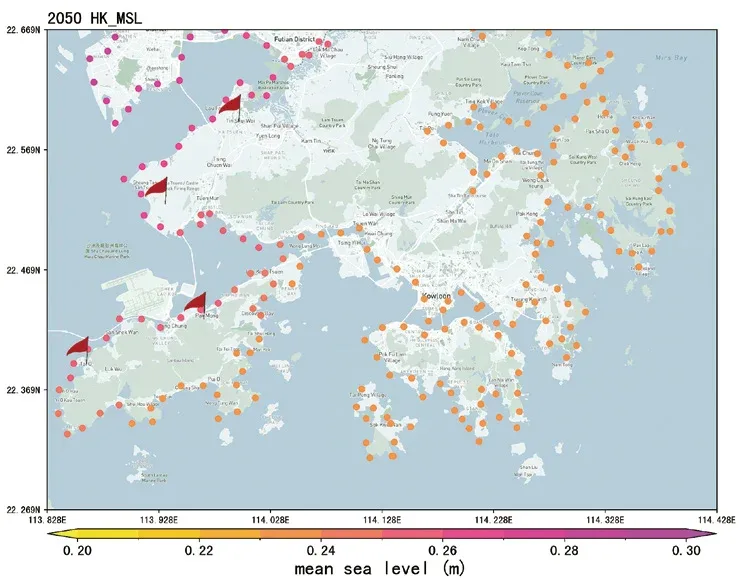
HKU Jockey Club Enterprise Sustainability Global Research Institute
World-Class Hub for Sustainability
1. Overview of Climate Risks in Hong Kong
1.3 Sea Level Rise: Hong Kong’s Major Climate Risk in the Long Run
Figure 5 projects the sea level rise in Hong Kong by 2050 based on our analysis of sea-level data. The year 2050 is a key point because Hong Kong, like many other countries and regions, has committed to achieving net zero by that year.
A rising sea level will cause severe economic and property losses, increase the probability of coastal flooding, and affect nearby residents. For example, Shen et al. (2022) estimate that a rise in sea level would affect approximately 8,500 square meters of land near Victoria Harbor under RCP4.5 by 2060. Combined with the projections in Figure 5, western and north-western regions such as Tin Shui Wai, Tuen Mun, Tung Chung, and Tai O would be at particularly high coastal inundation risk (as flagged in Figure 5).
Figure 5. Projected regional mean sea level rise for Hong Kong in 2050.

Notes: In 2050, the mean sea level in Hong Kong is projected to rise by 0.2 to 0.3 meters. The chromatic gradient from yellow to purple signifies increasing sea-level heights. The western areas of Hong Kong predominantly exceed 0.24 meters in sea-level elevation. (Data source: YoujiVest Climate Lab)